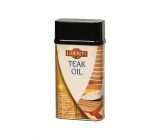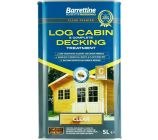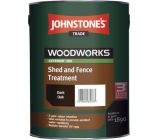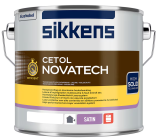
Garden Furniture Paint
-

Liberon Teak Oil with UV
From:£8.95(inc VAT)multiple sizes -

Liberon Garden Colour Care Decorative Woodstain
From:£38.95(inc VAT) -

Cuprinol Ultimate Furniture Oil
From:£12.49(inc VAT)multiple sizes -

Sadolin Classic Wood Protection Tester Pots
From:£3.95(inc VAT) -

Cuprinol Garden Shades
From:£10.49(inc VAT)9 colours multiple sizes -

Cuprinol Spray & Brush
From:£46.95(inc VAT) -

Osmo UV Protection
From:£27.29(inc VAT)multiple sizes -

Liberon Superior Danish Oil with UV Filter
From:£6.95(inc VAT)multiple sizes -

Barrettine Log Cabin Treatment
From:£36.95(inc VAT) -

Sadolin Classic Wood Protection
From:£16.95(inc VAT)FREE DELIVERY on 5lt Standard Colours 25 colours -

Johnstone's Shed & Fence Treatment
From:£15.95(inc VAT) -

Sadolin Wood Preserver (Discontinued)
From:£22.49(inc VAT) -

Sikkens Cetol Novatech
From:£58.95(inc VAT)multiple sizes
How to paint garden furniture
For painting garden furniture, we recommend using Cuprinol Garden Shades paint, as it can be easily applied using either a brush or spray and offers 6 year wood protection.
If you are painting wooden furniture, sand the surfaces by hand to get rid of any bumps or lumps and then remove any remaining dust with a clean, dry brush. Before applying your first coat of paint, you’ll need to prepare the furniture you are working with. Make sure to strip away any previously treated wood as well as any old coats of paint that have been applied. Applying a wood primer will help to prepare the surface of the wood and mean that the paint binds more easily.
You should apply your first coat of paint moving along the grain of the wood, using smooth consistent brush strokes or smooth spray movements to leave a nice finish. You’ll need to apply at least two coats of paint to your garden furniture, so leave 4 hours after applying the first coat to give the paint enough time to dry.
How to paint metal furniture
When looking to paint metal furniture, you’ll need to use a specialist metal paint. We recommend using a Zinsser Allcoat Exterior product, in either matt, gloss or even satin depending on your preference. These paints make painting your metal furniture a lot easier, with their self-priming ability and a fast recoat time of just one hour.
If you’re painting a surface that has rusted over time, you’ll want to sand away these rusted areas first (ideally using an orbital sander). Then, once you’ve smoothed down all the surfaces you intend to paint, give the metal a wipe down with a damp sponge or cloth to make sure it’s properly cleaned.
For the smoothest finish, you may choose to use a spray applicator to give the furniture an even coat of paint. However, a manual brush can work just as well. If you use a brush, we recommend building up thin layers of paint using multiple coats, as this will leave a more even finish behind and dry faster.
What kind of paint should you use for painting rocks in the garden?
If you’re looking to paint a rockery or even just a handful of pebbles, a specialist masonry paint or acrylic paint is your best bet. Masonry paints are particularly hard wearing and have dirt and weather resistant properties, meaning your colour will stay brighter for longer.













